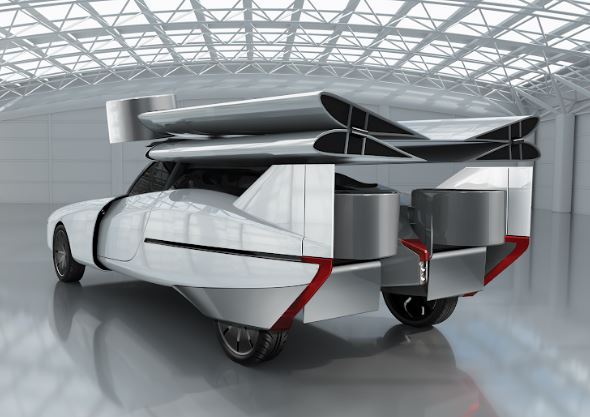
NFT, a company headquartered in Mountain View, California, with an R&D centre in Israel, has unveiled the ASKA (“flying bird” in Japanese) “and it’s the first viable eVTOL vehicle that can both drive on the road and fly autonomously in the sky,” said the company,
“.ASKA is now a viable reality, developed with a team of experts with vast experience in aeronautical and autonomous AI systems, including the development of the most advanced unmanned air vehicles in Israel and the US. Our team includes air vehicle engineers, automotive engineers, aerodynamic engineers, flight control engineers, algorithm engineers, autonomous systems engineers, and electrical engineers, all of whom share our dream of reshaping the future of transportation with a real autonomous flying car.”
The vehicle is being designed for a mass market in mind and developers are in discussion with automobile manufacturers to produce the concept in volume.
“We set our goals high for ASKA – and achieved them:
- The size of an SUV with a UAM range of up to 350 miles: ASKA accommodates up to three people and runs on rechargeable batteries with a range extender (hybrid) propulsion system.
- Autonomous flying: ASKA flies autonomously with its unique Sense & Avoid system. Sophisticated AI for detection & collision avoidance in the air, dealing with air challenges by sensing, building an awareness picture and choosing the best safety action in the flight path. ASKA has a unique IP for autonomous systems that validates and verifies these capabilities. We will integrate it with existing autonomous driving systems to make ASKA fully autonomous in the air and on the road.
- Affordability and mass market potential: Subscription model – ASKA is available as a subscription-based model, in addition to an ownership model. On a subscription basis, customers can use ASKA whenever they need it. Owners could create a revenue stream by putting their vehicle into the fleet when they are not using it.
Other features include
- Vertical takeoff and landing (VTOL) capabilities: Breakthrough technology delivers necessary thrust within a limited space. All ducted fans are within limited asset space, similar to the size of a car.
- Minimal infrastructure investment: Because ASKA is both drive and fly, it can be parked on the street/in a garage, and charge in existing charging stations. For takeoff and landing, minimal infrastructure is required (a launch pad of just 20 x 20 meters); ASKA will drive in and out, whereas other flying aircraft require terminals, special parking spaces and charging stations.
- Safety for families with children: Engineering breakthroughs provide careful attention to safety, such as no exposed propellers.
- Green: Our target is a 100% electric propulsion system. The first ASKA model will have a hybrid system that works with current battery technology and still achieve our target ROI. and we are in development to have a hydrogen-based propulsion system for the next generation of ASKA.
- Highly aerodynamic design: The operating requirements and form factor of road and air vehicles are not the same. Our out-of-the-box thinking led to an advanced aerodynamic configuration that drives safely and effectively on the ground and flies very efficiently with improved L/D (lift-to-drag ratio) in the air.
- Safe and simple transition to level flight: The sequence of transition from vertical flight to level flight is one of the main challenges in designing VTOL air vehicles. ASKA combines 14 ducted fans, wing, and control surfaces with advanced control software to ensure a safe and smooth transition.
- Quiet operation: A sophisticated ducted fan geometry and rotor design ensures a low noise level.
- Evacuation: Because ASKA is the size of a car, it can be moved with a typical tow track – no need for special cranes, etc.
- Charging and fueling: ASKA will use existing charging and fueling stations to eliminate the cost and environmental impact of building an extensive new infrastructure.
- Additional safety features: Design innovations match FAA safety requirements which include high reliability, back-up systems and sophisticated redundancy management algorithms.
- Safe landing: In case of power system failure the battery package will support a 5 km radius for safe flight and landing.
For more information
https://www.prlog.org/12773668-nft-displays-first-demonstrator-model-of-the-aska.pdf

